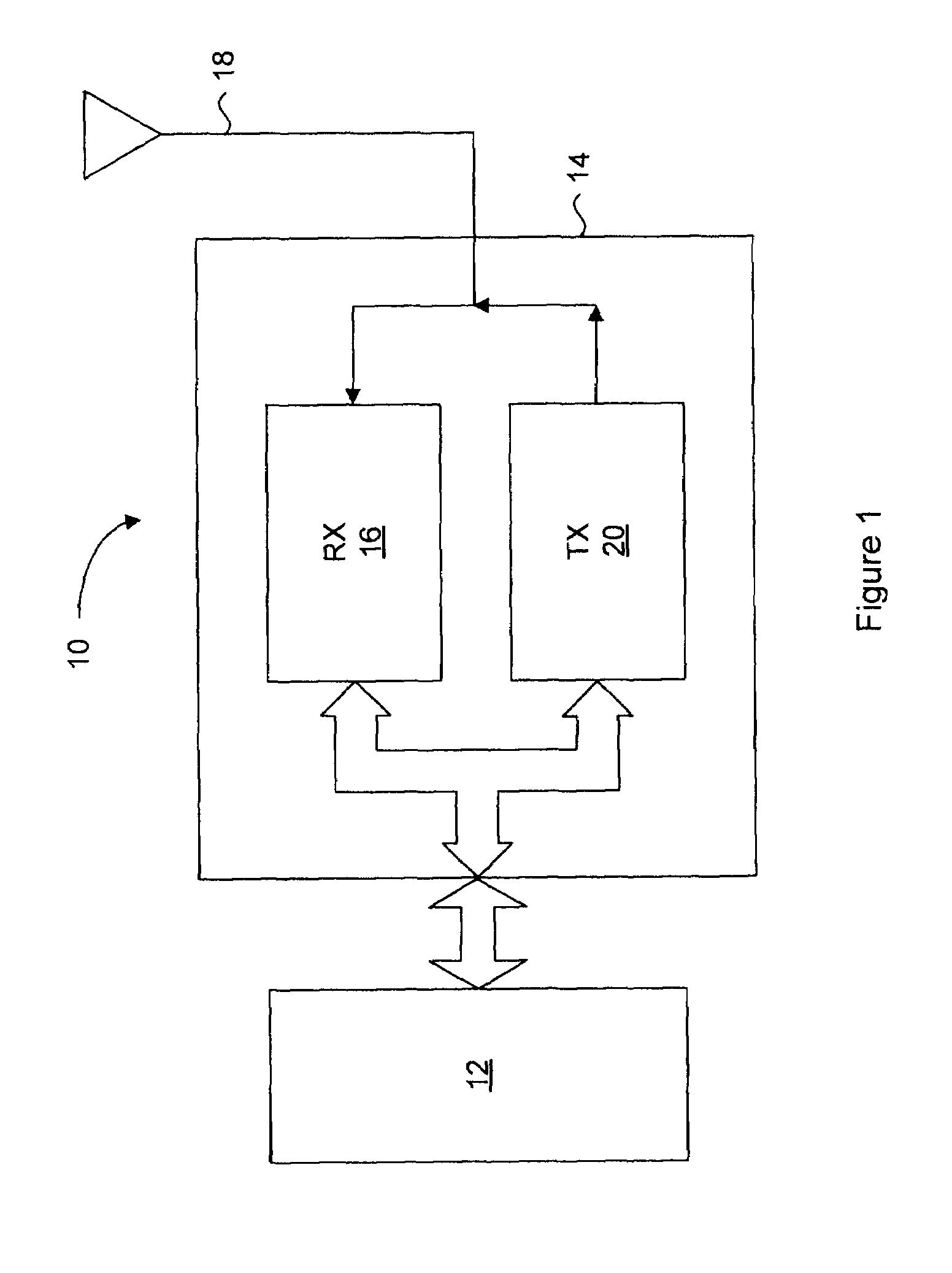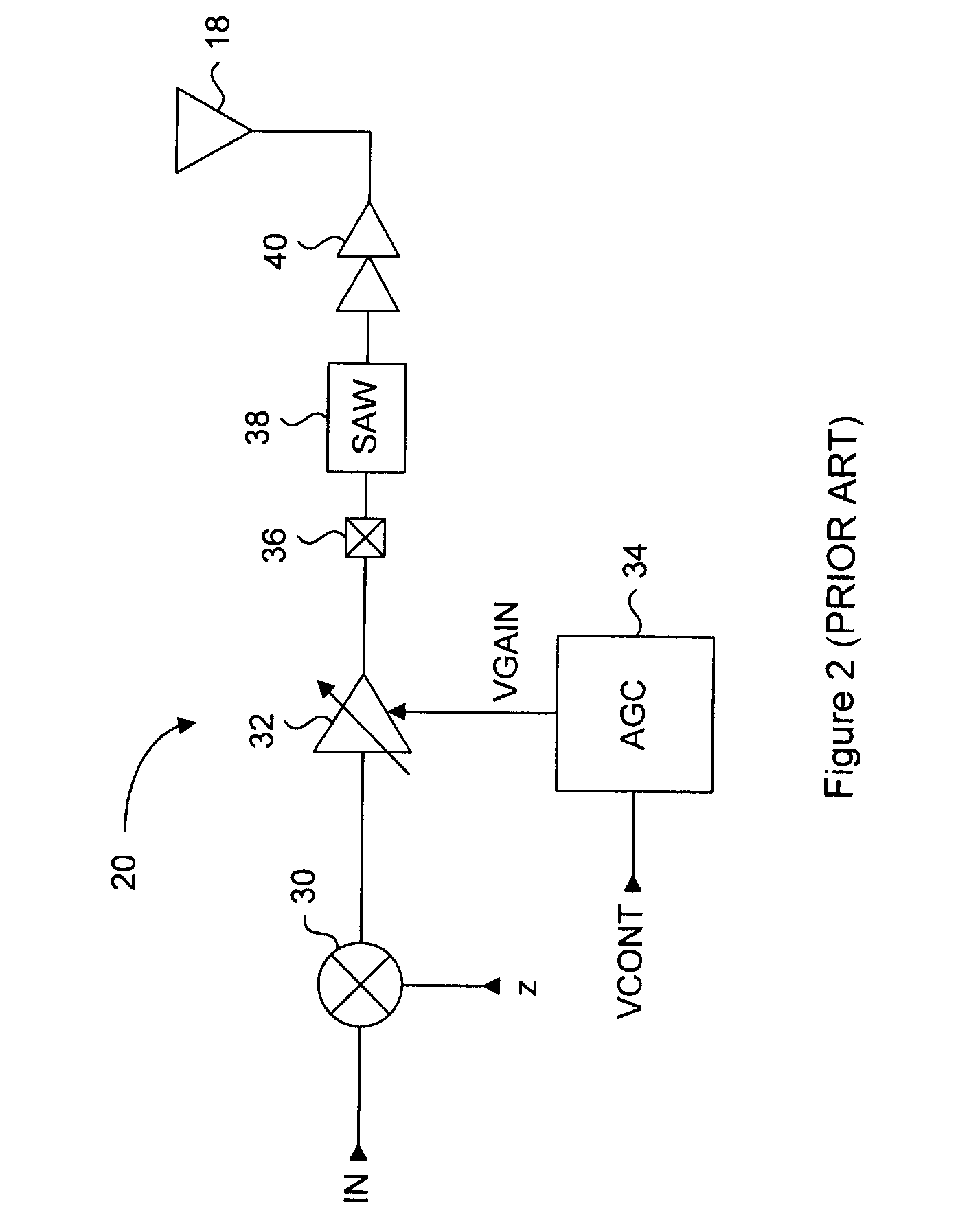Current controlled biasing for current-steering based RF variable gain amplifiers
a current-steering-based variable gain amplifier and biasing technology, which is applied in the direction of antennas, modulation, transmission, etc., can solve the problems of inability to exhibit substantially linear voltage-current characteristics of cmos transistors in general, relatively new manufacturing technologies, and high cost of manufacturing these rf devices
- Summary
- Abstract
- Description
- Claims
- Application Information
AI Technical Summary
Benefits of technology
Problems solved by technology
Method used
Image
Examples
Embodiment Construction
[0057]Generally, the present invention provides a CMOS automatic gain control (AGC) circuit that receives an analog control voltage and generates a temperature compensated gain voltage to linearly control the gain of a variable gain circuit operating in the sub-threshold region. A PTAT circuit having a resistor network coupled to a current mirror circuit operating in the sub-threshold region establishes a current having an proportional relationship to temperature. This current is used as a supply for a voltage to voltage converter circuit, which generates an intermediate voltage in response to the analog control voltage. A linearizing circuit operating in the sub-threshold region pre-conditions the intermediate voltage, which is then applied to a variable gain circuit. The variable gain circuit is operated in the sub-threshold region, and the preconditioned intermediate voltage will control the amount of gain to be substantially linear with respect to the analog control voltage, and...
PUM
 Login to View More
Login to View More Abstract
Description
Claims
Application Information
 Login to View More
Login to View More - R&D
- Intellectual Property
- Life Sciences
- Materials
- Tech Scout
- Unparalleled Data Quality
- Higher Quality Content
- 60% Fewer Hallucinations
Browse by: Latest US Patents, China's latest patents, Technical Efficacy Thesaurus, Application Domain, Technology Topic, Popular Technical Reports.
© 2025 PatSnap. All rights reserved.Legal|Privacy policy|Modern Slavery Act Transparency Statement|Sitemap|About US| Contact US: help@patsnap.com



